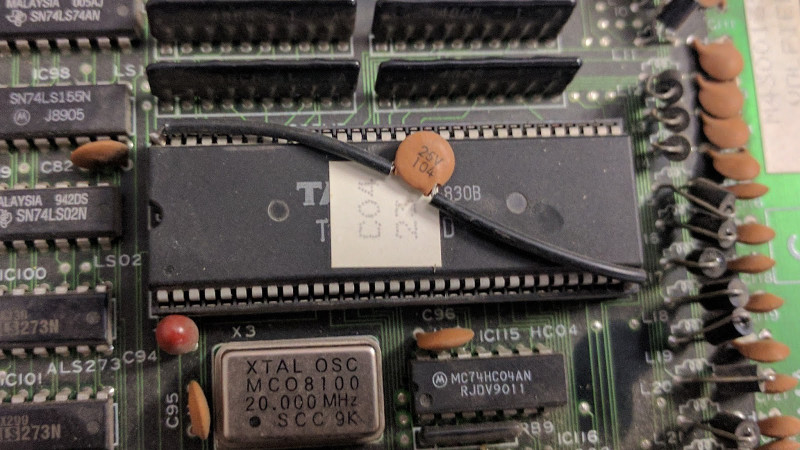Nostalgia is a funny thing. That desire we all get to relive past memories can make you do things that in any other scenario would be out of the question. The effect seems even stronger when it comes to old video games. How else can you explain buying the same games over and over every time they get “remastered” for the next generation of consoles? But what if those remasters aren’t good enough?
 If you have a burning desire to play a 100% accurate version of certain old arcade games, you might have your work cut out for you. Getting precise ROMs from some of these machines is exceptionally difficult, and as explained on the [CAPS0ff] blog, sometimes requires nearly superhuman feats of engineering.
If you have a burning desire to play a 100% accurate version of certain old arcade games, you might have your work cut out for you. Getting precise ROMs from some of these machines is exceptionally difficult, and as explained on the [CAPS0ff] blog, sometimes requires nearly superhuman feats of engineering.
As explained in the blog post, less invasive methods of getting inside the Taito C-Chip had already been examined and come up lacking. Despite best efforts, sending the unlock command to the chip didn’t yield the desired effect. If you can’t read the ROM the usual way, you need to get a little creative.
The process starts by milling down the case of the chip until the integrated circuit is just starting to become visible. Then acid is used to fully expose the traces. The traces are then tinned, and some very fine soldering is done to get the chip wired up to the reader. All told it takes about three hours from start to finish to pull a ROM using this method. But it’s all worth it in the end when you can play that 100% accurate version of Rainbow Islands. Or so we’ve been told.
If you couldn’t tell, this isn’t the first time a chip has been flayed open like this on the [CAPS0ff] blog.















Open(ing) the source, the hard way.
“git pull …”
…let me get my acid and soldering iron. Brb!
Please do proofreading. “until the the” …
Thanks.
Out of curiosity I looked at your blog to see your superior proofreading skills, and there were grammatical errors in almost every paragraph. Oh well.
Oh my stars, you’re so right. :D
We all make mistakes from time
time to time.
I don’t mean to be rude, but I feel the way in which you provided this feedback was unnecessary and snide.
I typically find typos and grammatical mistakes on Hackaday as well, it’s to be expected the pure yield the output far exceeds the editing bandwidth. I’m sure the staff is quite happy to receive feedback and corrections, however your phrasing makes all of us look bad.
And I am having a time soldering onto pins 4 and 5 of the RTL2832 in my RTL SDR for direct sampling.
Yeah, I can’t fathom soldering that small, but I don’t have the tools for it.
Sidebar: it’s so much fun listening to HF on the RTL SDR dongles. I threw a small low-pass filter in front of mine, as I was getting significant broadcast FM bleed.
So grateful to these guys and all their hard work *pats arcade running MAME*
I was thinking about this and perhaps another approach that wouldn’t involve surgery and damaging the chip would be to monitor the address lines and data lines passively as the game is running. You would have to fully play the game to get coverage and maybe you might miss some interesting code or data that is never touched but it should give you the full game for Mame purposes.
That soldering tho <3